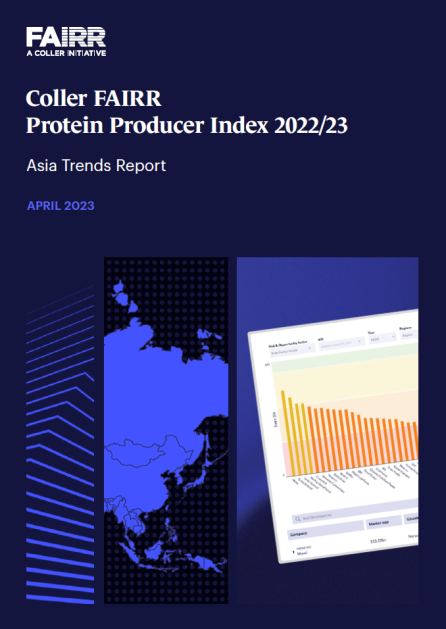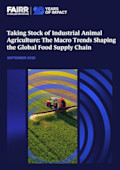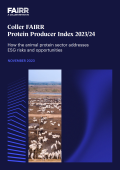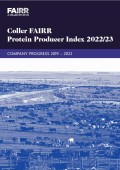Overview
The Coller FAIRR Protein Producer Index has grown in both recognition and impact since its launch in 2018. Established to address the knowledge gap in the environmental, social and governance (ESG) risks associated with the food sector, it is increasingly meeting its fundamental aims of engaging with leading protein producers and influencing investors.
The Index assesses 60 of the largest listed global meat, dairy and aquaculture companies on 10 ESG factors. Asia is home to 27 of these companies, including 12 in the People’s Republic of China. This report demonstrates how some Asian companies have progressed considerably in addressing the ESG risks associated with food production. Compared to 2021, there has been improvement almost across the board – most notably with regard to food safety, antibiotics and alternative proteins.
However, Asian companies generally continue to lag behind the rest of the Index. Many are still failing to manage specific risks at even a basic level. Some have exhibited very little improvement, and overall performance on sustainability governance has actually worsened slightly since 2021. This report focuses on the climate and nature-related risks posed by the animal agriculture sector in the region.
Highlights
This report can help investors:
To understand the Coller FAIRR Protein Producer Index Methodology
To understand the ESG risks facing the animal agriculture sector
To get an overview of the latest policy developments in three key regions: China, Japan, Thailand
To understand what current best practices look like through case studies
To know how companies’ ESG performance are relative to their peers
Download
What you can expect to find in the report download
Detailed methodology
Breakdown of the company universe
Factor specific materiality analysis
Industry trend analysis
Regulatory analysis and policy timelines
Best practice examples and case studies
Overall trends and conclusions




